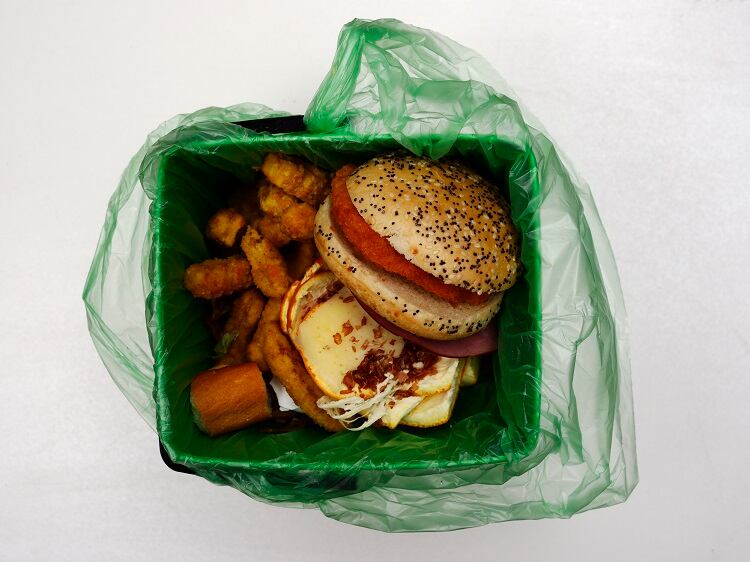Global food waste statistics are well publicised. One-third of all food produced for human consumption goes to waste, meaning that 25% of the world’s fresh water supply is used to grow food that never reaches the table.
The financial costs of food wastage amount to around $1trn per year. And if food waste were a country, it would be the third largest emitter of greenhouse gases, behind China and the US.
At the same time, it is estimated at one in nine people are hungry or undernourished. In short, food waste does not make environmental, social, nor financial sense.
Combatting food waste is a challenge that, in developed countries, requires behavioural change. The UN Food and Agriculture Organization (FAO) believes education plays a key role in inciting anti-food waste action, and is turning its attention to children to help combat the problem.
How to empower children?
“Children are the agents of change,” according to Oksana Sapiga, FAO Communications and Partnership Consultant Oksana Sapiga.
“It’s very important to invest in their education if you want to create cultural change and transform food systems [to enable] more affordable, nutritious and healthy diets for all.”
Of course, behavioural change should be backed by ‘right’ and ‘solid’ policies, as well as the correct kind of food market and strategies, she told delegates at a recent European Food Forum (EFF) event.
When all these elements are combined, it’s really the consumer that has the ‘ultimate power’ to either mitigate or worsen the issue, the communications expert explained. “Therefore, it’s very important that we help and support consumers to make the right decisions and choices.” And that includes the ‘consumers of tomorrow’: children.

How can this be done? First of all, by understanding the socio-economic factors influencing food choices and consumption behaviour. “All this requires research…in order to provide relevant information. Only then can we speak in the language that will resonate with consumers – when we understand what it is they are missing and how best to present the information and packaging that have the biggest impact,” we were told.
“While communication is very important to build this awareness and general understanding of the issue, it is the involvement and active engagement of consumers that will... sensitise consumers to the issue and help them act differently.”
Empowering consumers by providing reliable and clear information and tools is another component, according to Sapiga. “When they feel they are empowered and when they feel they understand the role they can have in fixing and tackling the issue, that is the best situation…”
And finally, change can be driven through sensitisation and engagement, the communications specialist continued, including emotional engagement. “This is the strongest way to drive action.”
Rolling out the education campaign
One of the FAO’s education initiative focuses on raising awareness in schools to reduce and prevent food waste. The agency has rolled out this campaign, titled ‘Do Good: Save Food’, across Albania, Croatia, Hungary, Lithuania, North Macedonia, Portugal, Turkey, and Ukraine.
The FAO, together with the International Food Waste Coalition, and in collaboration with sociologists, educational specialists, as well as food safety experts, developed an educational package to promote food waste reduction amongst children in primary and secondary schools.
The package consists of four guides, each targeted to a particular age group between 5 years and 14 years and over. This specification is ‘particularly important’, noted Sapiga. “Each guide is developed in such a way that it speaks the language of the children of that age and includes examples that children of a particular age can implement easily, can understand easily, and also are engaged with at their level.”
The materials have been designed to change the children’s behaviour by explaining first and foremost what food waste is, and why it is important to reduce it in their everyday lives.
Exercises can be incorporated into teachers’ lessons plans or into extra-curricular programmes, Sapiga explained. “It’s highly adaptable and flexible, so it can cater to different needs, including time availability, and the age and knowledge of the children.”

Activities are based around ‘very simple actions’ that are ‘easy to implement’, we were told. These include meal planning, preparing the food shopping list, regularly checking the contents of the fridge, and reusing leftovers to prepare a new meal. “These are very simple steps, not something complicated. [The idea is to] motivate children with quick results, so they can see that they can [make a difference].”
Influencing multiple generations
The FAO is relying on collaboration with local partners and stakeholders, including NGOs and charities, at a national and city level to ‘cascade’ the programme down through schools.
The goal, Sapiga told delegates at the EFF event, is to transform ‘food wasters’ into ‘advocates for sustainability' – something she that she reiterated relies on consumer empowerment.
“That’s a very active role, and that’s a role that comes from the position of an empowered person. Somebody who knows what to do and is motivated and willing to do it for [their] own wellbeing, as well as for that of the community as a whole.”
The communications specialist continued: “By teaching, empowering, and equipping them with actions they can [undertake] easily, and behaviours they can develop in order to reduce food waste and introduce to their families and friends, children have the ability to influence their parents – and that is a great way to reach two groups at the same time.”




